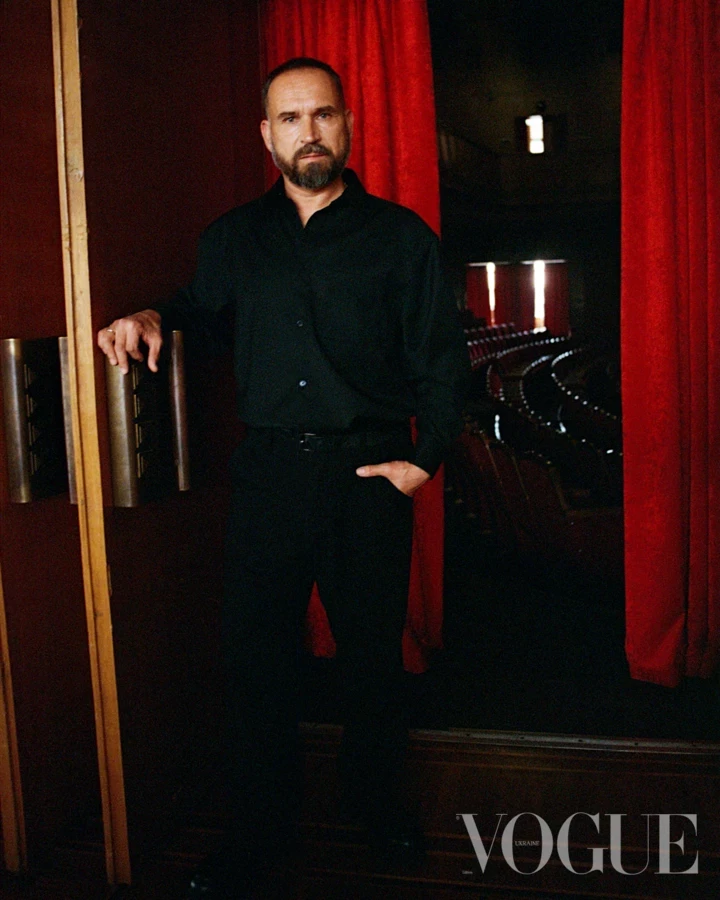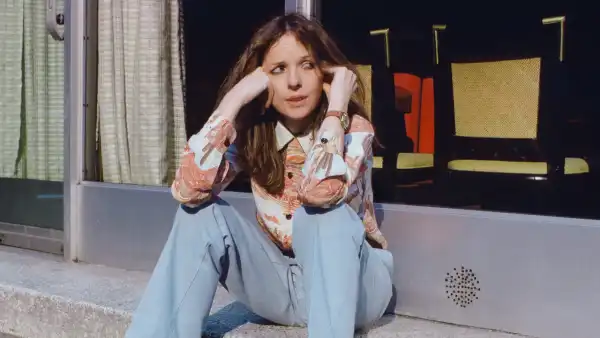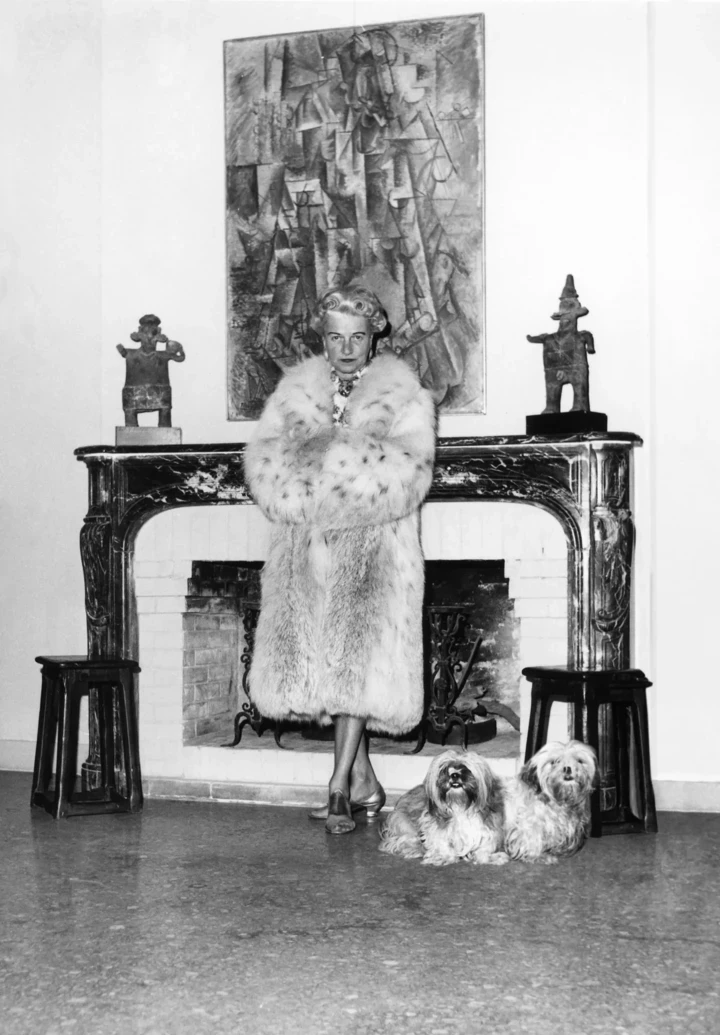
Save this storySave this storySave this storySave this story

Shauna Lyon
Goings On editor
You’re reading the Goings On newsletter, a guide to what we’re watching, listening to, and doing. Sign up to receive it in your in-box.
Much of the romance of summer in New York City happens outdoors, via picnics, bike rides, the Hudson River breeze, and, especially, al-fresco performances galore, of which there is a bounty this year—at Little Island, at Lincoln Center, and at parks in every borough, thanks to SummerStage’s packed calendar and Shakespeare in the Park’s roving Mobile Unit. Meanwhile, various stages will host superstars such as Missy Elliott, Sandra Oh, Charli XCX, Tony Shalhoub, the Foo Fighters, and the Pixies; Furiosa, killer tornadoes, and Kevin Costner all return to the big screen. Art shows include the Brazilian multidisciplinary artist Tadáskia and the late German Expressionist painter Paula Modersohn-Becker, both getting their first major exhibitions in the U.S.; American Ballet Theatre débuts a dance about Virginia Woolf. If you fancy some even fresher air, there are out-of-town options just a train ride away, at Bard’s SummerScape, or the Hudson Valley Shakespeare Festival—there’s even an opera about the painter Hilma af Klint, in Philadelphia. Also, Cole Escola’s “Oh, Mary!” is moving to Broadway: she just wants to sing cabaret! The dog days of summer are looking very fun.
Jump to: Classical Music | Theatre | Art | Dance | Contemporary Music | Movies
Classical Music

Illustrations by Jackson GibbsA Philharmonic Farewell, “Inside Light”
The summer season begins with a departure, when the New York Philharmonic’s music director, Jaap van Zweden, steps down, after six years. His final programs, laden with symbolism, shift from the mournful drama of Mozart’s Requiem (select dates May 23-28) to the new-day promise of Mahler’s “Resurrection” Symphony (June 6-8), at David Geffen Hall.
Having wrapped its subscription season, the orchestra basks in the sunshine of the city’s parks and of Randall Goosby’s violin tone in free al-fresco performances of Mendelssohn’s Violin Concerto, led by Thomas Wilkins (June 11-14). The Metropolitan Opera also tours the boroughs with its free outdoor recital series (select dates June 18-28).
At the Park Avenue Armory, the cavernous Drill Hall is set aglow for a spatial installation called “Inside Light,” which allows audiences to experience a nearly five-hour sliver of Karlheinz Stockhausen’s mammoth twenty-nine-hour cycle, “Licht” (select dates June 5-14).
With the Met and the Philharmonic away, Lincoln Center’s tracts of travertine won’t lie fallow. The classically trained drag queens Sapphira Cristál and Monét X Change intermingle Mozart and Bizet with sequins and falsetto high notes for “Soundcake,” which opens Lincoln Center’s “Summer for the City” programming (June 12). At David Geffen Hall, Jonathon Heyward conducts the newly renamed Festival Orchestra of Lincoln Center, formerly the Mostly Mozart Festival Orchestra, in his first season as music director, showcasing the ensemble’s usual blend of new and comfortingly familiar works (select dates July 20-Aug. 10).
Intrepidness prevails at Little Island. The countertenor Anthony Roth Costanzo whirls through all the roles of Mozart’s “Marriage of Figaro” in a ninety-minute adaptation (select dates Aug. 30-Sept. 22). Davóne Tines honors the legendary voice and activism of Paul Robeson (June 26-29). Suzan-Lori Parks, Cécile McLorin Salvant, and the mordant chanteuse Justin Vivian Bond each designs a week of events for a free curators’ series.
On the Baroque side, the deeply expressive Augustin Hadelich plays violin concertos for the Orchestra of St. Luke’s Bach festival (June 18), and TENET Vocal Artists brings its own Bach project—a decade-long dash through his oratorios—to a rousing finish, with the Mass in B Minor, at St. Jean Baptiste Church (June 1). Moving into the Classical and early Romantic eras, the Chamber Music Society of Lincoln Center performs diaphanous Mendelssohn and Mozart pieces (select dates July 9-27).
Out of town, the eccentric nineteenth-century visionary Hector Berlioz is the focus of the Bard Music Festival, in Annandale-on-Hudson, N.Y., which opens with a pairing of his evergreen “Symphonie Fantastique” and its rarer sequel, “Lélio” (Aug. 9). Rhiannon Giddens—the folk singer-songwriter, Pulitzer Prize-winning opera composer, and banjo picker on Beyoncé’s “Texas Hold ’Em”—plays songs from her new album at Caramoor (Aug. 3), in Katonah, N.Y., which also hosts the adventuresome vocal ensemble Roomful of Teeth (June 28) and Les Arts Florissants’s touring production of Purcell’s “The Fairy Queen” (July 20).
At Tanglewood, in the Berkshires, the Boston Symphony Orchestra plunges into the sumptuous depths of German Romanticism in a tantalizing program of Richard Strauss’s orchestral music, with the soprano Renée Fleming (July 7), and Act III of Wagner’s “Götterdämmerung,” with Christine Goerke as Brünnhilde (July 20). The Philadelphia Orchestra nestles into its summer home, in Saratoga Springs, N.Y., with the bombastic majesty of Strauss’s “Alpine Symphony” (Aug. 8).—Oussama Zahr
The Theatre

Bardic Fairy Dust, “Titanic” Riffs, “Oh, Mary!” on Broadway
After a breakneck spring—a year’s worth of Broadway openings in just a few weeks—much of this summer will seem drowsy. During the dead of August, for instance, almost nothing is stirring. Early summer, though, is rife with offerings: Raja Feather Kelly’s “The Fires”—a time-hopping drama about the erotic lives of three Brooklyn men—flickers at SoHo Rep (now in previews); Alexis Scheer’s “Breaking the Story,” starring Maggie Siff as a war correspondent, premières at Second Stage (starting previews May 16); and the great Sandra Oh is at Atlantic Theatre Company in “The Welkin” (May 16), Lucy Kirkwood’s much anticipated feminist thriller about an eighteenth-century Englishwoman facing down her mobcapped peers. Atlantic Stage 2 hosts Shayan Lotfi’s sibling drama, “What Became of Us” (May 17), which rotates two starry duos: some nights, BD Wong and Rosalind Chao; others, Tony Shalhoub and the divine Shohreh Aghdashloo.
If you’re looking for something experimental, your first stop should be Clubbed Thumb’s Summerworks festival: T. Adamson’s “Usus” (May 16-28), Bailey Williams’s “Coach Coach” (June 3-13), and Crystal Finn’s “Find Me Here” (June 19-29) are all must-sees. The Bushwick Starr puts on Michelle J. (Micha) Rodriguez’s musical “Presencia,” which millennial-izes the Moses story (Connelly Theatre; June 11-29), and St. Ann’s Warehouse welcomes “Dark Noon” (June 7-July 7), a South African burlesque of the American Wild West—a discovery from last year’s Edinburgh Fringe. The Brick brings back the hit solo show “Never Let Go: An Unauthorized Retelling of James Cameron’s Titanic” (May 22-June 1), in which Michael Kinnan plays all the parts of the titular film; it should pair nicely with “Titanic” (City Center; June 11-23), an Encores! staging of Peter Stone and Maury Yeston’s 1997 musical. That cast is packed to the portholes—Jose Llana, Chuck Cooper, Ramin Karimloo, and Bonnie Milligan, ahoy.
Speaking of splashy shows, Kenny Leon directs a Broadway revival, for Roundabout, of Samm-Art Williams’s “Home,” from 1979, in which a North Carolina farmer goes on a northern odyssey, only to discover the appeal of his own front porch (Todd Haimes Theatre; May 17), and “Oh, Mary!” shoots its shot uptown, moving Cole Escola’s camp farce about First Lady Mary Todd Lincoln to the Lyceum (June 26). Meanwhile, at PAC NYC, the directors Zhailon Levingston and Bill Rauch take on the Andrew Lloyd Webber meowsterpiece “Cats,” reënvisioning it as “Cats: ‘The Jellicle Ball’ ” (June 13-July 14), a ballroom-voguing competition, complete with dancers, plus André De Shields as Old Deuteronomy, strutting down a catwalk. (You see what they did there.)
The Public Theatre’s Shakespeare in the Park is paused this year—the Delacorte is still being renovated—but the Public’s Mobile Unit tours the five boroughs with a bilingual adaptation of “The Comedy of Errors” (May 28-June 30), and the Classical Theatre of Harlem’s “A Midsummer Night’s Dream” (July 6-28) glitters in Marcus Garvey Park, so there’s plenty of Bardic fairy dust to go around. And, if you’re still yearning for summer classics, you can always . . . leave. The Hudson Valley Shakespeare Festival, in Garrison, N.Y., presents a repertory season (June 11-Sept. 2), which includes Whitney White’s disco-infused adaptation of Shakespeare’s Wars of the Roses plays, called “By the Queen”; at Bard SummerScape, the puckish transgressives of Elevator Repair Service attempt James Joyce’s behemoth “Ulysses” (June 20-July 14); Kate Scelsa and Robert M. Johanson première their new opera-theatre work, “Hilma,” based on the mystical painter Hilma af Klint, at the Wilma, in Philadelphia (June 4-23); and Florence Welch and Martyna Majok have the green light for another of this year’s adaptations of F. Scott Fitzgerald’s novel, “Gatsby,” at the American Repertory Theatre, in Cambridge (May 23). Why not drive up to see it? You know it’s what Daisy would do.—Helen Shaw
Art

Sizzling Color, Paula Modersohn-Becker, a Gilded Age Master
Though far from the most renowned today, the Jewish Museum may have been the single most important art institution in New York during the nineteen-sixties, arguably the single most important decade in New York art history; had it never existed, the careers of umpteen major sculptors and painters wouldn’t have been the same. “Overflow, Afterglow: New Work in Chromatic Figuration” (opening May 23) gathers paintings, sculptures, and installations by seven artists, most of them under forty, and continues the museum’s honorable tradition of making worthy, unfamiliar names more familiar. “Chromatic” is putting it mildly—the colors pop and sizzle, and anyone who visits in the hopes of escaping the summer temperatures will find a different kind of heat waiting inside.
If the Jewish Museum leaves you thirsty for more lush brightness, the Brazilian multidisciplinary artist Tadáskía brings enough for everybody with the MOMA exhibition “Projects: Tadáskía,” presented in collaboration with the Studio Museum in Harlem (May 24). The centerpiece, holding court in the museum’s street-level galleries all summer, is a sixty-one-part free-form drawing, titled “ave preta mística mystical black bird,” which relays a tale of mythic, triumphant journeying—a fitting theme for the artist’s first solo show in the U.S.
A second artist getting her first major museum show in the U.S. is the German Expressionist painter Paula Modersohn-Becker, who died in 1907, at the age of thirty-one. Though perhaps best known for her correspondences with her friend Rainer Maria Rilke, she produced more than seven hundred paintings, the most astonishing of which are her nude self-portraits, often thought to be the first created by a female artist. That some of these images depict her pregnant adds a melancholy subtext she couldn’t have intended: it was a postpartum embolism that ended her life. A year earlier, she told Rilke, “I am Me, and hope to become that more and more,” a mini-manifesto that inspired the name of the exhibition “Paula Modersohn-Becker: Ich Bin Ich” (June 6), at the Neue Galerie.
Is it possible for a creative figure whose works are beloved and synonymous with the superlative to be underappreciated? With “Collecting Inspiration: Edward C. Moore at Tiffany & Co.” (June 9), the Met fêtes a Gilded Age master who helped make the world’s most famous jewelry firm what it remains today. More than a hundred and eighty pieces from Moore’s personal collection, ranging from Japanese lacquerware to Venetian glass, along with seventy pieces from Tiffany, where he served as chief designer for more than two decades, present a thorough case for Moore as an essential craftsman and a great artist.
Later that month, a different collector by the name of Moore assists the Morgan Library & Museum with its centennial celebrations. “Far and Away: Drawings from the Clement C. Moore Collection” (June 28) comprises around seventy-five works by Rembrandt, Peter Lely, Hendrick Goltzius, and others—great news if you care about art and even better news if you love the Dutch Old Masters. Moore was named after his ancestor, the author of “A Visit from St. Nicholas”; this summer, at the Morgan, Christmas comes early.
If Christmas in summer isn’t climate confusion enough, pay a visit to the eighth floor of the Whitney Museum, where, on June 29, the 1972 installation “Survival Piece #5: Portable Orchard,” created by Helen Mayer Harrison and Newton Harrison, makes its museum début. Eighteen live trees occupy the space, their peacefulness a reproof to the growing emergency beyond them. Sometimes the past makes us think, Now we know better, and other times—hot on the heels of what was probably the hottest spring on record, for instance—it makes us realize that we haven’t learned much at all.—Jackson Arn
Dance

“Summer for the City,” a Virginia Woolf Ballet
In summer, if you’re lucky, dance can include fresh air, beautiful views, even fireflies. For the third year in a row, Lincoln Center will be transformed into an outdoor urban playground, complete with a giant disco ball, as part of “Summer for the City” (June 12-Aug. 10). Classes, silent-disco dancing (with music provided via headphones), and themed dance parties, from swing to mambo, animate the center’s grounds—as do more formal performances. During “India Week” (July 10-14), the British dancer-choreographer Aakash Odedra—trained in kathak and bharata natyam—and the Chinese dancer-choreographer Hu Shenyuan bring their collaboration, “Samsara” (July 11-12), to the Rose Theatre at Jazz at Lincoln Center. In this tale of discovery, based on a sixteenth-century Chinese novel recounting the travels of a Buddhist monk, Odedra’s lithe, quick-footed dancing meets Hu’s liquid, shape-shifting style.
Steps away, at the Metropolitan Opera House, American Ballet Theatre rolls out a series of big evening-length ballets (June 18-July 20). The rhapsodic (such as John Cranko’s “Onegin,” based on Pushkin and set to music by Tchaikovsky, though not from the eponymous opera) alternates with the cinematic (Christopher Wheeldon’s “Like Water for Chocolate”) and the technologically dazzling. The latter is best exemplified by the company première of “Woolf Works,” Wayne McGregor’s 2015 précis of Virginia Woolf’s life and œuvre. In this ballet, Woolf’s lyrical, poetic prose is translated into visual and aural theatre through the use of roiling projections, lasers, and an enveloping score by Max Richter, counterparts to McGregor’s slippery-sinuous choreography. Alessandra Ferri, for whom the central role—a stand-in for Woolf—was created, returns for two performances (June 25 and June 28).
From June 26 to August 25, the bucolic grounds of Jacob’s Pillow Dance Festival, an oasis of dance nestled in the Berkshires, come alive. London’s Royal Ballet (July 3-7) pays its first visit, with a smorgasbord of excerpts and short works that includes a section from Pam Tanowitz’s recent piece “Secret Things,” a witty deconstruction of ballet training and technique, along with Frederick Ashton’s “Five Brahms Waltzes in the Manner of Isadora Duncan,” an evocation of Duncan’s liberated, ecstatic explorations of music. The Russian megastar Natalia Osipova, based in London for the past decade, makes an appearance on July 3, in the Ashton ballet. On July 12, an evening called “Three Duets” is devoted to duets both by and inspired by Merce Cunningham. Cunningham’s experiments in partnering—through which he created a dispassionate autonomy for each of the dancers—expanded the possibilities of the form. Alongside his “Landrover,” the dancers will perform Liz Gerring’s lively, athletic “Dialogue” and Kyle Abraham’s more intimate “MotorRover.”
The Paul Taylor Dance Company, which is contemplating a major move into an expansive new space in midtown, brings two programs of chamber dances to the Joyce (June 25-30). The works point to Taylor’s range, from the savagery of “Big Bertha”—a shocking depiction of sexual abuse in a seemingly “normal” family—to the innocent lyricism of “Airs.”
Additional open-air performances take place at parks all over the city, including but not limited to Little Island (the première of Twyla Tharp’s “How Long Blues,” June 1-23; Pam Tanowitz’s “Day for Night,” July 17-21), Bryant Park (its Picnic Performances feature “Torch,” from Ronald K. Brown/Evidence, on June 14, and “Gloria,” from Mark Morris Dance Group, on Aug. 31), Prospect Park (a mixed program by Ronald K. Brown/Evidence, in the BRIC Celebrate Brooklyn! festival, on July 26), and Rockefeller Park, which hosts the Battery Dance Festival, Aug. 11-17.—Marina Harss
Contemporary Music

Modern R. & B., Rap Agitators, Gen X Royalty
This summer of music concerts is marked by virtuosos and tinkerers, flourishing songwriters and nostalgia-laden bands, outdoor jazz and insider pop. The spellbinding harpist Brandee Younger returns to the Blue Note (June 10), and the Tuareg musician Mdou Moctar brings the intensified guitar playing of his fiery LP “Funeral for Justice” to Warsaw (June 26). As Nourished by Time, Marcus Brown blends club music and R. & B. into an aberrant pop, and he unleashes the unsteady voice at its center on Bowery Ballroom (June 11). On Aug. 23, at Terminal 5, Santigold pursues the merger of indie and electronic sounds that she began with her self-titled début, in 2008.
At Radio City Music Hall, the ascending Philly balladeer Lizzy McAlpine shares raw, intimate songs about coming of age (June 18-19). The late-blooming country troubadour Charley Crockett blows into Brooklyn Paramount to spin yarns from his searching new album, “$10 Cowboy” (July 20). Jessica Pratt, among the most bewitching folk singer-songwriters of the moment, stages her insular music at Bowery Ballroom (July 24). On June 16, Corinne Bailey Rae, a sunny-soul songbird in transition, kicks off a packed schedule for SummerStage, which teams up with the Blue Note Jazz Festival for performances at Central Park and other parks around the city—see the drummer Yussef Dayes (June 22) and the Mercury Prize-winning quintet Ezra Collective (July 7). Beyond the jazz fest, smooth sounds at SummerStage abound from Masego and Jordan Ward (June 19), the minimalist soloist Arooj Aftab (July 24), and the pianist Robert Glasper together with the neo-jazz singer YEBBA (Aug. 1).
The amplitude of modern R. & B. is on full display this season. At the Barclays Center stop on her tour “The Magic Hour,” the soother Jhené Aiko unites with the like-minded artists Tink, Kiana Ledé, and UMI (July 1). The syrup-voiced Lucky Daye offers music of stimulation at Radio City Music Hall (Aug. 7), building on R. & B. of the past with subtle instrumental frills. At Brooklyn Paramount, SiR and Zacari, scions of the TDE label (July 29), and the Drake-sponsored playboy PARTYNEXTDOOR (Aug. 8-9) put forth medleys inspired by their rap adjacency.
Additionally, some rap agitators take the summer to put everyone on notice. ScHoolboy Q, a dynamo reimagining gangsta-rap brutishness, mines the energy of his bounce-back LP, “Blue Lips” (Brooklyn Paramount; July 27). The Blue Note continues a hip-hop run with Killer Mike, who swept the rap categories at this year’s Grammys (July 29-31). In another late-career success for a rap veteran, the multimedia trailblazer Missy Elliott embarks on her first-ever headlining tour, joined by old friends—Busta Rhymes, Ciara, and Timbaland—at Barclays Center (Aug. 12).
Other stadiums and arenas host rock from multiple eras. The Pixies and Modest Mouse bridge two generations of alternative and indie music, co-headlining a show at Forest Hills Stadium (June 15). At Citi Field, after two nights of the Foo Fighters with special guests (July 17 and July 19), skate punk descends, with Blink-182 (July 21) and Green Day (Aug. 5). At Madison Square Garden, as the members of Glass Animals look to build out their sound, they extend the stage to the genre-bursting Brockhampton leader Kevin Abstract (Aug. 13).
Contemporary pop artists can be found elsewhere, breaking with convention and showing off new music. The former Kanye West protégée Kacy Hill works through her first album since 2021, “Bug” (Music Hall of Williamsburg; May 30). On “Funk Generation,” the Brazilian titan Anitta emerges atop the baile-funk wave (Brooklyn Paramount; June 2-3). The summer reaches a fever pitch, on June 11, at Knockdown Center, when Charli XCX débuts “Brat,” a club record calling back to the London rave scene of her youth.—Sheldon Pearce
Movies

Furiosa’s Origin, Apollo 11, Costner’s Wild West
The concept of summer movies is synonymous with action, and also with action franchises, as with “Furiosa: A Mad Max Saga” (May 24), George Miller’s prequel to “Mad Max: Fury Road.” Anya Taylor-Joy plays the title character as a young woman, who is kidnapped from the matriarchy in which she’s been raised and must fight her biker-gang captors in order to return home; Chris Hemsworth plays Furiosa’s nemesis, the warlord Dementus. “A Quiet Place: Day One” (June 28), the third installment in the series, is also a prequel, directed by Michael Sarnoski and starring Lupita Nyong’o, Djimon Hounsou, Alex Wolff, and Joseph Quinn in an origin story about an alien invasion’s first contact with Earth, in New York City. “Twisters” (July 19), the sequel to the 1996 hit “Twister,” stars Daisy Edgar-Jones, Glen Powell, and Anthony Ramos as some of the storm chasers risking life and limb to track tornadoes, which have grown more prevalent owing to climate change. Lee Isaac Chung (“Minari”) directed.
Upcoming historical dramas, whether factual or counterfactual, are headed by “Kidnapped” (May 24), in which the Italian director Marco Bellocchio tells the real-life story of Edgardo Mortara, a Jewish boy living in Bologna in the eighteen-fifties, who, having been secretly baptized by his family’s maid, was therefore legally considered Catholic and, as a result, was taken from his parents and placed in a Catholic school. “Fly Me to the Moon” (July 12), set amid the run-up to the launch of Apollo 11, in 1969, involves an advertising executive (Scarlett Johansson) and a NASA engineer (Channing Tatum) who are ordered to work together to create a fake moon landing in case the real one fails. Greg Berlanti directed. In Kevin Costner’s largely self-financed passion project, “Horizon: An American Saga,” the first two “chapters” (of a planned four) trace the westward expansion of the United States amid the Civil War (June 28 and Aug. 16). Costner, who directed and co-wrote the script, also stars, alongside a cast that includes Sam Worthington, Sienna Miller, Tatanka Means, and Giovanni Ribisi.
Crime continues to pay for notable directors, as in Richard Linklater’s wry drama “Hit Man” (May 24), based on a true story, starring Glen Powell (who co-wrote the script) as an undercover police officer who, during a sting operation, falls in love with a suspect (Adria Arjona). Jeff Nichols’s “The Bikeriders” (June 21), inspired by a 1968 photo book by Danny Lyon, focusses on a group of motorcyclists in Chicago whose activities cross over into violence. Jodie Comer, Tom Hardy, and Austin Butler are bikers; Mike Faist portrays Lyon. In Josh Margolin’s comedy “Thelma” (June 21), June Squibb plays a nonagenarian who, after falling victim to a phone scam that costs her thousands of dollars, takes vigilante action; the late Richard Roundtree, in his last movie role, plays her partner.
Family stories come in many forms in the season’s offerings. The playwright Annie Baker’s first feature, “Janet Planet” (June 21), set in her home state of Massachusetts in 1991, stars Julianne Nicholson as a single mother who’s trying to work out her love life while coping with the needs of her eleven-year-old daughter (Zoe Ziegler) during summer vacation. Lily Gladstone stars in Erica Tremblay’s début fiction feature, “Fancy Dance” (June 21), as a Seneca-Cayuga woman undertaking a dangerous search for her sister, who has gone missing; she brings her niece (Isabel DeRoy-Olson) on the journey. The latest mystery from M. Night Shyamalan, “Trap” (Aug. 9), is centered on a serial killer (Josh Hartnett) who is being hunted by police officers while attending a concert with his daughter (Ariel Donoghue).—Richard Brody
P.S. Good stuff on the Internet:
- A solid defense of the soggy sandwich
- Why are there so many “Girl” books?
- Nearing consensus on plant consciousness
Sourse: newyorker.com







